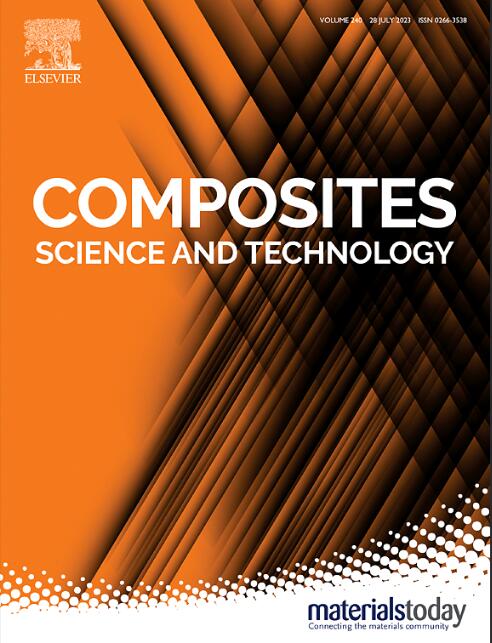4D printing of shape memory polymer composites via glass fiber-regulated shape morphing
IF 8.3
1区 材料科学
Q1 MATERIALS SCIENCE, COMPOSITES
引用次数: 0
Abstract
Inspired by the shape morphing mechanisms in plants, various configurations have been manufactured to achieve shape morphing in response to external stimuli. To enrich the shape morphing behaviors of fiber reinforced thermoset shape memory polymer composites (SMPCs), a 4D printing method based on shrinkage strain mismatch between bilayer composites, has been developed to transform planar geometries into 3D configurations. The shrinkage strain arises from the volatilization of non-fully-reacted component in a prepolymerization system during the post-thermal curing stage. The magnitude and direction of this strain are regulated by the orientation and content of the filled fibers. Additionally, a finite element model (FEM) incorporating the Mori-Tanaka and Halpin-Tsai models is employed to predict shape morphing behaviors, with results showing good agreement with experiments. This strategy has been proven effective in manufacturing of complex 3D structures, including Miura-ori folding and gripper structures. The shape memory effect of the composites endows both the Miura-ori and gripper with secondary programmability. Furthermore, these two configurations also demonstrate excellent load-bearing capacity and expansive grasping ability, respectively.

求助全文
约1分钟内获得全文
求助全文
来源期刊

Composites Science and Technology
工程技术-材料科学:复合
CiteScore
16.20
自引率
9.90%
发文量
611
审稿时长
33 days
期刊介绍:
Composites Science and Technology publishes refereed original articles on the fundamental and applied science of engineering composites. The focus of this journal is on polymeric matrix composites with reinforcements/fillers ranging from nano- to macro-scale. CSTE encourages manuscripts reporting unique, innovative contributions to the physics, chemistry, materials science and applied mechanics aspects of advanced composites.
Besides traditional fiber reinforced composites, novel composites with significant potential for engineering applications are encouraged.
 求助内容:
求助内容: 应助结果提醒方式:
应助结果提醒方式:


